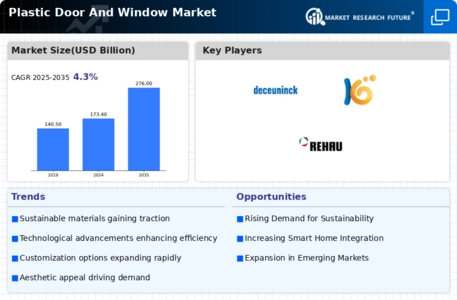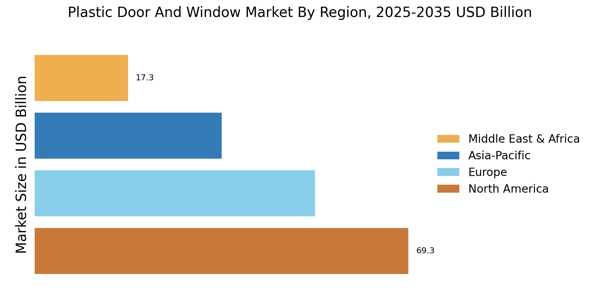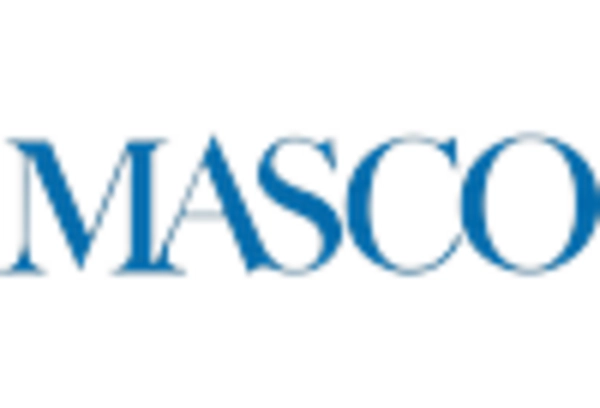Urbanization Trends
Urbanization is a significant driver influencing the Plastic Door And Window Market. As populations migrate towards urban centers, the demand for residential and commercial buildings is escalating. This trend is accompanied by a growing need for efficient and aesthetically pleasing building materials, including plastic doors and windows. According to recent statistics, urban areas are projected to house over two-thirds of the global population by 2050, leading to increased construction activities. Consequently, the Plastic Door And Window Market is likely to experience heightened demand as builders seek versatile and cost-effective solutions that cater to the needs of urban dwellers.
Regulatory Standards
Regulatory standards play a crucial role in shaping the Plastic Door And Window Market. Governments worldwide are implementing stringent building codes and energy efficiency regulations that mandate the use of specific materials and technologies. These regulations often favor plastic products due to their lightweight nature and potential for energy savings. For example, energy-efficient windows are increasingly required in new constructions, driving demand for compliant products. As a result, manufacturers in the Plastic Door And Window Market are compelled to innovate and adapt their offerings to meet these evolving standards, ensuring they remain competitive in a regulated environment.
Sustainability Initiatives
The increasing emphasis on sustainability appears to be a pivotal driver for the Plastic Door And Window Market. As consumers and manufacturers alike prioritize eco-friendly materials, the demand for recyclable and energy-efficient plastic products is on the rise. This shift is reflected in the growing market for sustainable building materials, which is projected to reach substantial figures in the coming years. Manufacturers are investing in innovative production techniques that reduce waste and energy consumption, aligning with global sustainability goals. Consequently, the Plastic Door And Window Market is likely to benefit from this trend, as more builders and homeowners seek environmentally responsible options that do not compromise on quality or aesthetics.
Technological Advancements
Technological advancements are reshaping the Plastic Door And Window Market, introducing new materials and manufacturing processes that enhance product performance. Innovations such as improved thermal insulation and enhanced durability are becoming increasingly prevalent. For instance, the integration of advanced polymers and composites is enabling manufacturers to produce doors and windows that are not only lightweight but also resistant to weathering and impact. This trend is supported by data indicating that energy-efficient windows can reduce heating and cooling costs by up to 30%. As technology continues to evolve, the Plastic Door And Window Market is expected to see a surge in demand for high-performance products that meet modern energy standards.
Consumer Preferences for Aesthetics
Consumer preferences for aesthetics are emerging as a vital driver in the Plastic Door And Window Market. Homeowners and builders are increasingly seeking products that not only serve functional purposes but also enhance the visual appeal of properties. This trend is evident in the rising popularity of customizable plastic doors and windows that offer various colors, finishes, and designs. Market data suggests that aesthetically pleasing products can significantly influence purchasing decisions, with many consumers willing to invest more for enhanced design features. As a result, the Plastic Door And Window Market is likely to see a shift towards more stylish and customizable options that cater to diverse consumer tastes.


















Leave a Comment